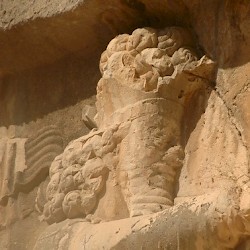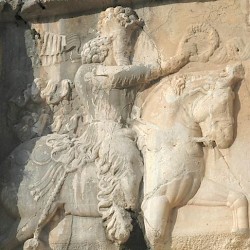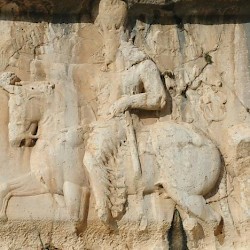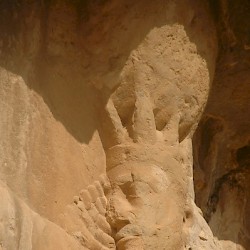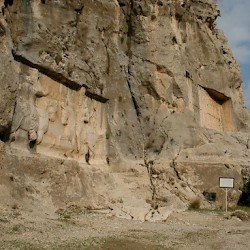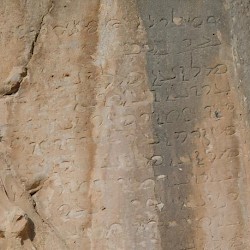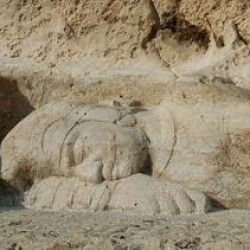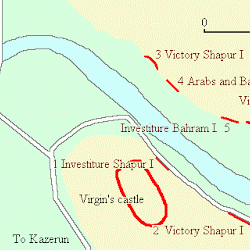Bishapur, Relief V
Relief V
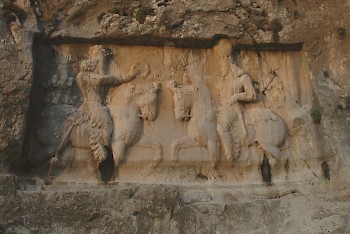
The fifth Sasanian rock relief at Bishapur - chronologically, the fourth one - is a classical representation of an investiture, this time of king Bahram I (r.273-276). There is a close parallel to the reliefs of the Investiture of Ardašir I at Naqš-i Rustam and the Investiture of Shapur I at Naqš-e Rajab.
The scene is typical. From the left, the supreme god Ahuramazda approaches the king and gives him the ring of power, the cydaris. There is a diadem tied to it. To the right, we see Bahram accepting the cydaris.
Bahram's reign was the beginning of an era of Sasanian weakness. Under Shapur I, the Persians had defeated the armies of Rome, but things now started to change and the Persians were forced to abandond territories in the west to buy peace. It comes as a surprise, therefore, to see Bahram represented as a conqueror, with a defeated enemy underneath his horse.
However, it is likely that the dead man did not belong to the original design. It seems that king Narseh (r.293-303) added the figure of the defeated enemy after a victory in the east; he certainly added an inscription to the orginal monument.
Like two other monuments on the north bank of the Tang-e Chowgan, the fifth relief is damaged by the aqueduct that used to be there. It was removed in the 1970s.
Literature
Louis Vanden Berghe, Reliefs rupestres de l' Iran ancien (1983 Brussels), #62.
